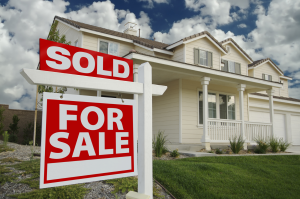Before the dust of the 2008 economic downturn settles, Americans — and the government — should prepare for what will be another substantial hit to the housing market, says analyst and former Goldman Sachs executive Joshua Pollard in a recent report sent to the White House.
“There is humbling proof in high probabilities,” Pollard writes in his 18-page report. “As an economist, statistician and housing expert, I am lamentably confident that home prices will fall by 15% within three years.”
Preparing for a Drop in Homes’ Values
In comparison, after reaching peak levels in April 2007, U.S. home prices — as measured by the Federal Housing Finance Agency (FHFA) price index — had fallen 13% nationwide by the end of 2009, previous reports indicate.
When the drop in homes’ prices began to fall in 2007, owners’ equity in their real estate fell from almost $13.5 trillion in the first quarter of 2006, to a little less than $5.3 trillion in the first quarter of 2009. In that three-year period, there was a decline in total home equity of more than 60%.
A similar situation is brewing now, Pollard says. High investor demand has been pushing up home values, with prices already 12% overvalued today. This misevaluation matches the excess of 2006-2007, just before the Great Recession.
Today’s overvalued homes make up $23 trillion of consumer asset value and serve as the “psychological linchpin” for $17 trillion of invested capital. However, with a 15% home price deflation, consumers’ real estate net worth drops 26% or $3.4 trillion.
Not only will the drop in homes’ values impact current homeowners and investors, but the resulting financial imbalance will likely halt Millennials’ willingness and ability to own a home.
“Home price devaluation will expose a major financial imbalance that could lower an entire generation’s esteem for the American dream,” Pollard writes.
This looming 15% drop is characterized by three stages: “hot-to-cool,” “demand-to-supply” and “deflation/response,” he says.
Three Drop in Home Value Stages
Stage one has been underway for 16 months already, since summer 2013, ignited by an interest rate spike while prices were rising double-digit percentages. During this stage, home flippers lose money in the red-hot investor markets (New York City, San Francisco and Las Vegas); new home absorption rates, or sales per community, decline; investors slow their home purchases, developers lose pricing power; and total home sales decline year over year.
In stage two, small shocks convert demand pools into supply ripples. A first wave of investors begin trimming prices to get ahead of future declines; discounts increase to incentivize home buyers as they wait longer for better deals; and developers reduce land budgets as cancellations tick up.
Finally, in stage three, falling home prices create a negative deflationary feedback loop that foreshadows policy response.
“The shift from a good market to a bad market occurs quickly, exaggerated by the circular currents of confidence from consumers, investors and lenders in unison,” Pollard writes. “When unnatural levels of demand or supply impact the market, prices are pushed in lockstep.”








